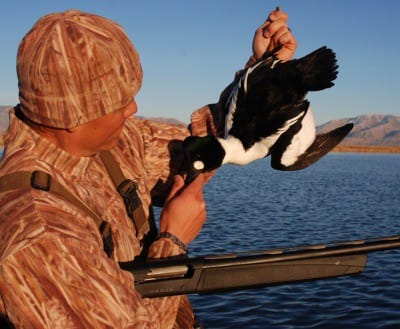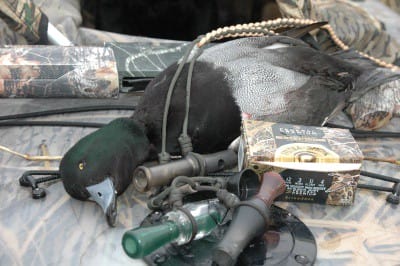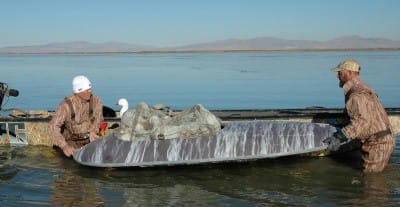
I make no apologies to the mallard purists when I say there’s nothing wrong with greenheads, but there’s just something about divers. Perhaps it’s where they live-the huge expanses of untamed water the likes of which swallowed the Edmund Fitzgerald. Or the swells near the mouth of Washington’s Columbia River, where more than 2,000 broken hulls festoon the shifting sands.
Maybe it’s the men, the diver men, who epitomize waterfowling in its most traditional form. Or maybe it’s the birds themselves, those brutish, brawling, big-chested avian knaves that bore into a spread with a ferocity nothing short of intimidating. Or just as easily ignore even the finest of hand-carved and painted creations.
It’s true; I was raised a puddle duck hunter by a puddle duck hunter, cutting my ‘fowling teeth during the mid 1970s on beaver swamp mallards and late-season river blacks. But, and over the course of the past decade, I’ve rediscovered the art of waterfowling via the diver clan and their big-water haunts. And I’ve found there’s quite a bit to learn when it comes to making the switch from greenheads to redheads.
The Boats and Blinds
Over the course of my diver education, I’ve learned the boats and blinds used to hunt these species are as varied as the birds themselves. Combination boat blinds-a powered hull with a camouflaged blind constructed atop-are the more commonly-seen watercraft employed for both getting to the birds and hiding from them. Hunters gunning from layout boats-small, no-motor low-profile skiffs such as Tony Smith’s Lake Bonneville Layout Boats (lakebonnevillelayoutboats.com) will use a second larger tender boat. It’s the motorized tender’s responsibility to set the layout, rig and retrieve the decoys, and pick up any fallen birds.

The Decoys
Diver decoy variables, numbers, arrangements, anchors, cords, and so on, are often based primarily on location and species. However, the standard rule of thumb is big water equals big numbers, big decoys, and bright colors.
Big water often presents visibility problems. That is, the birds can, due to elements such as distance or waves, have a difficult time seeing a decoy spread. Big numbers of oversize (magnum or super-magnum) decoys, then, coupled with the eye-catching white of the drakes of species such as ‘cans and bluebills, help to ensure the rig is seen.
Today, most diver-men, myself included, rig their decoys using what’s known as a longline method. Each decoy is rigged with its own dropper cord. In the case of my divers, a 36-inch strand of heavy tarred cord. A large stainless steel clip called a gang clip is attached to the dropper, and is used to quickly clip each decoy to the mainline.
My mainlines consist of 90 feet of leaded (sinking) crab line. A brass clip at one end allows me to attach an 8-pound mushroom anchor, aka head weight; a second brass clip at the opposite end is used for a 1.5-pound grapple style tail weight. Once in position, I attach the head weight and drop it over while backing the boat, by current or motor, down. As I back away from the head weight, I clip individual decoys onto the mainline, usually a dozen or so per line. Then, and making sure I have enough line at the end to reach and hold the bottom, I’ll snap the grapple weight and toss it over. This method allows large numbers of decoys to be set out and picked up quickly.
The Guns
For divers, I shoot the same Winchester MAXUS with a modified choke that I shoot for puddle ducks and geese. In terms of ammunition, 3-inch steel No. 1s or No. 2s are fine in most situations. High-velocity steel is even better, particularly on windy days.

Better yet are any of the non-steel/non-toxics, with my favorites being 1 3/8-ounce Winchester Xtended Range No. 4s. Divers, particularly cold-water divers, are big, strong, well-feathered, and heavily muscled birds so light loads won’t cut it.
The Table
Anyone who doesn’t hunt divers because “divers aren’t edible” hasn’t had them fixed properly. As I’ve discovered, there are four keys to good-eating divers: (1) clean them as soon as possible after harvest, (2) remove all the fat, (3) soak the breasts or birds in saltwater or buttermilk overnight, and (4) cook them rare.
Then, don’t be afraid to say it. “My name’s Mister X, and I’m a big-water diver-holic!”



